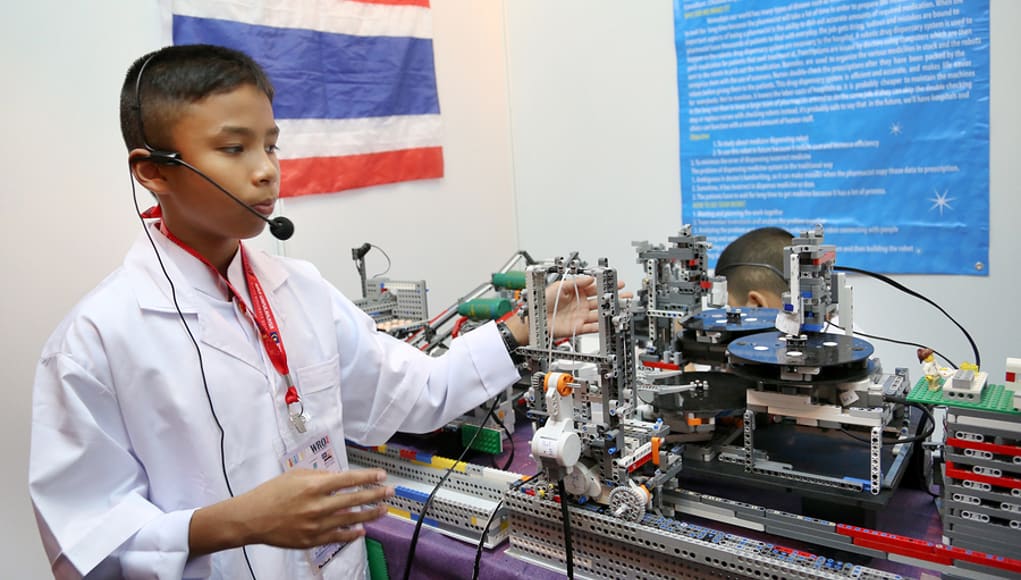How to Generate Interest in STEM Fields in Early Elementary Students

By Tracy Derrell
Educating students in STEM subjects (Science, Technology, Engineering, Math) has become a popular topic among teachers, parents, and school administrators. Will STEM end up another trend in education, or will it permanently impact the way teachers teach and students learn?
The latter is more likely. For years, we’ve been reading about other countries surpassing the United States in math and science instruction. Recent assessments placed the U.S. in the middle of the international pack, and behind other industrialized nations, including Singapore, Finland, and Canada.
Improving the quality of STEM education isn’t just a matter of national pride. The future security of the U.S. rests on the expertise of capable, educated people who know how to ward off cyberattacks and develop scientific and technological tools to keep the country safe from foreign and domestic challenges. And according to the Bureau of Labor Statistics (BLS), careers in STEM fields will grow at a rate much faster than average, and workers in most of these professions will enjoy high salaries.
Engaging children in science, technology, engineering, and mathematics activities at a young age is vital. The early elementary grades are an ideal time to introduce STEM. Here are some ways to generate interest among young children:
- Know that STEM activities have a strong foundation in play, but instruction is important too. These types of lessons tend to be hands-on, which makes them a great option for younger children, who are naturally curious and energetic and love tactile tasks. Implementing a STEM curriculum during the early elementary grades which combines play with direct instruction can lead to long-term interest in these subjects, and research shows that providing these activities to students when they are young has future positive impacts on both math and literacy achievement. Thinking about the numerous options for bringing this approach to learning into your school might feel overwhelming and be potentially expensive, but pricey materials aren’t necessary. For example, building a catapult from popsicle sticks and rubber bands is a simple, inexpensive way to introduce kids to engineering.
- Get students into nature. Celebrating the great outdoors isn’t something that automatically comes to mind when thinking about STEM subjects. But STEM education is about developing new ideas through exploration, and a thorough curriculum should embrace the natural world too. While robotics and coding might be the more trendy and popular activities, studying the natural world is a key part of a good program. A solid outdoor education program can teach children to synthesize ideas and learn to recognize and interpret patterns, which are valuable skills for inside the classroom too.
- Involve families. Your school may already host regular events, like movie nights and pizza parties, as well as other fun opportunities to include families. These gatherings can be a great, low-pressure way to welcome parents into the schools, and might help facilitate strong home-school connections. Gearing some events towards STEM activities can be a great way to generate interest and enthusiasm in both students and their parents. A high-quality event could focus on a specific theme, or encompass tasks from each STEM subject. Planning a STEM family event can be a rewarding and enriching experience for the whole school community–including you. Introducing students to parents and other community members who’ve pursued careers in STEM fields can be another meaningful way to generate interest in students, and a great way for teachers to explore their leadership skills. Setting up a STEM career fair would be a great way for students to build knowledge and make connections between what they’re learning in school and how those lessons might translate to a career further down the line, while also evolving teachers’ own roles in shaping their school’s approach towards education.
Getting children started with STEM education in the early grades may get them started on a path towards vital and potentially lucrative careers, while generating enthusiasm for learning and exploration. The list of possible ways to incorporate STEM curriculum is extensive, giving schools and districts an endless amount of options for implementing new ways to teach and learn.
For more, see:
- Why Early Childhood Education Matters Now More Than Ever
- Solving the EdTech Gap for Early Learners
- Using Robots to Teach Elementary Students About Human Nature
Tracy Derrell is a Hudson Valley-based freelance writer who specializes in blogging and educational publishing. She taught English in New York City for sixteen years.
Stay in-the-know with all things EdTech and innovations in learning by signing up to receive the weekly Smart Update.




Ankita
Hi my name is Ankita and I run acornlabs.org.
I am interested in learning about the role or maker technologies in traditional classroom education - what their benefits are? do they facilitate learning? are they of benefit for a long term or only short term initiatives? Could you speak more to that or point me to resources that could help with that?